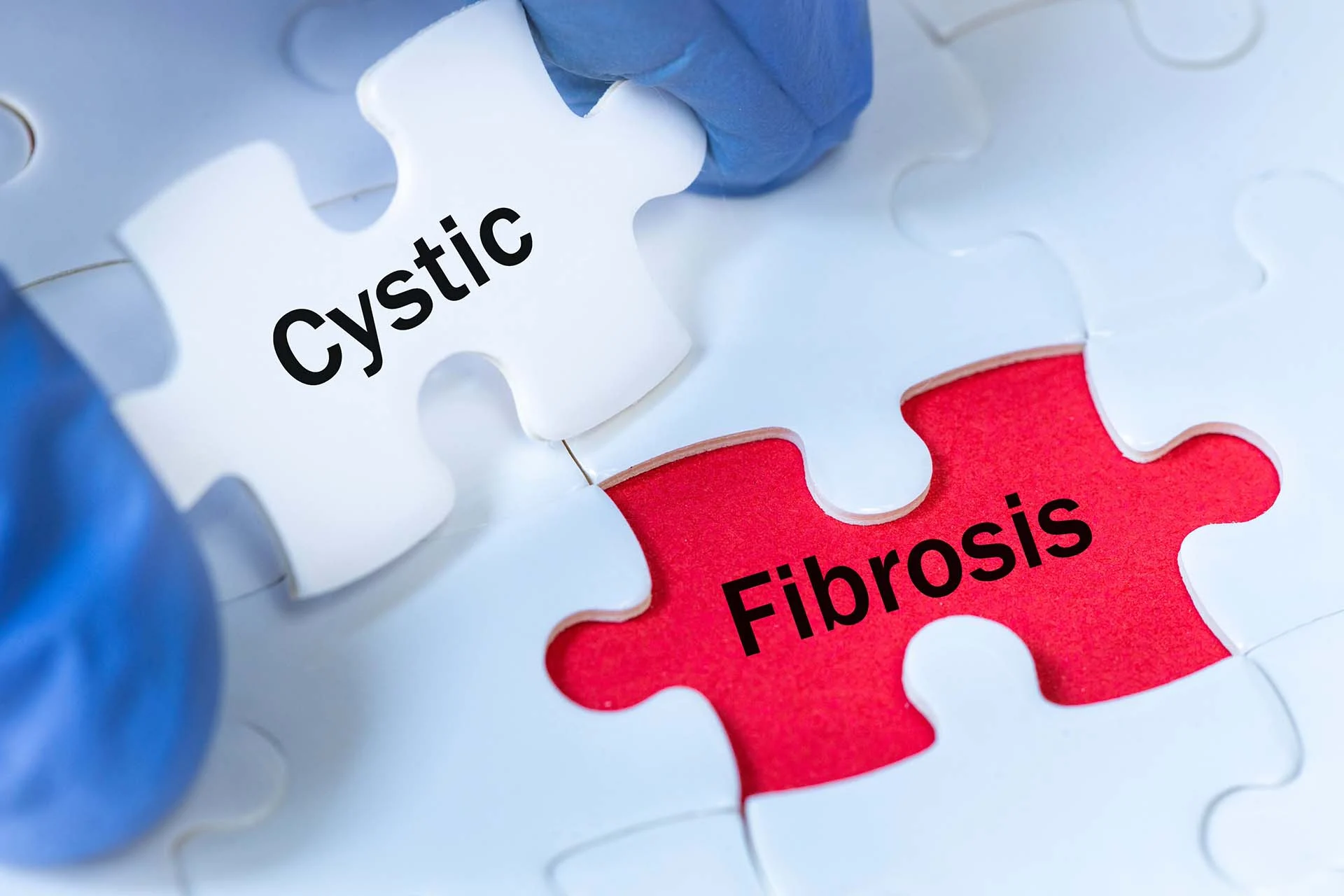On an ordinary morning in London, a young mother wraps her son in a warm coat, readying him for another hospital visit. Her child, born with cystic fibrosis, has lived through daily inhalers, enzymes, and an unyielding routine of chest physiotherapy. Now, a new story emerges that promises relief not just for him, but for thousands of others worldwide: a groundbreaking inhaled gene therapy that offers hope beyond anything previously imagined.
A Breakthrough Worth the Wait
For decades, cystic fibrosis (CF) has been a name linked to thick mucus, recurring lung infections, and a complex therapy regimen. Despite remarkable advances—like CFTR protein modulators—roughly 10–15% of people with CF remain without effective treatments, leaving them with repeated infections, hospital stays, and a future overshadowed by progressive respiratory failure.
Then comes a bold notion from an international team led by Imperial College London and supported by partners Boehringer Ingelheim, the UK Respiratory Gene Therapy Consortium, and a biotech group called OXB. They’ve launched a clinical trial labeled LENTICLAIR 1, testing whether BI 3720931—an inhalable gene therapy—can restore proper CFTR function in anyone with CF, regardless of their specific mutation.
If that prospect sounds like science fiction, rest assured: these researchers have chased it for more than 24 years. And if successful, they could open an entirely new era of care for those living with CF.
CF at a Glance: A Hereditary Challenge
Cystic fibrosis starts with a glitch in the CFTR gene, which normally helps balance fluid and salt throughout the body. When that gene misfires, thick mucus builds up in the lungs, pancreas, and elsewhere, creating a breeding ground for repeat infections. Many people with CF go through daily therapies—like chest physiotherapy, antibiotics, and enzyme supplements with every meal—to cope.
It’s also an inherited condition that usually worsens as time passes. Around 105,000 individuals worldwide live with it, and scientists have found over 2,000 CFTR mutations, each able to affect severity in its own way.
Recent medications focus on repairing the flawed CFTR protein, but not every CFTR mutation reacts to them. That leaves thousands without any good options. That’s why this new gene therapy stands out: instead of treating the broken protein, it aims to fix the CFTR gene itself—whether a patient’s mutation is deltaF508, nonsense, or something else entirely.
The Vision: An Inhaled Gene Delivery
The star of LENTICLAIR 1 is BI 3720931, an elegantly simple concept that took decades to refine. It uses lentiviral vectors—engineered viruses—to insert a healthy CFTR gene into lung cells. Instead of targeting the defective CFTR protein, these viruses carry a correct version of the gene, effectively rewriting the cell’s code so it can produce normal CFTR proteins.
Professor Eric Alton, who’s directing this global study, explains it like this: “We want to reintroduce a working CFTR blueprint into the lung’s epithelial cells. With an inhalable aerosol, the therapy goes straight where it’s needed most.”
But can a virus be safe? For one thing, these viruses are heavily modified, removing their usual harmful tools. They only function as couriers—delivering the new gene into airway cells without the typical infection risk. Decades of gene therapy have honed these viral vectors to minimize side effects.
Why Lentiviruses?
Early gene therapy attempts for CF used non-viral vectors or different viruses, like adenoviruses. However, they faced efficiency problems or triggered problematic immune responses. Lentiviral vectors, by contrast, can integrate their genetic cargo smoothly into human cells, ensuring longer-lasting benefits. And if the effect wanes over time, re-dosing might be possible, since lentivirus-based therapies typically create a manageable immune reaction.
What the Trial Looks Like
Enter LENTICLAIR 1. This global trial will include participants at specialized centers across the UK, France, Italy, the Netherlands, and Spain. The plan involves:
- Safety and Dose-Finding (36 Adults): They’ll test increasing doses of the therapy, checking how well patients tolerate it and finalizing the most suitable dose.
- Efficacy Assessment: A double-blind, placebo-controlled portion to see if BI 3720931 truly improves lung function and quality of life. They’ll compare those receiving the therapy with those on placebo.
Afterwards, participants transition into a long-term follow-up study—LENTICLAIR-ON—to track sustained effects and safety. By 2027, the hope is to wrap up the official analysis and, if results hold, apply for broader approval.
Who Stands to Benefit?
This therapy could be a lifeline for:
- Patients not helped by CFTR modulators: Right now, modulators like elexacaftor/tezacaftor/ivacaftor only work for certain gene defects. At least 1 in 10 CF patients remains stuck without a targeted approach.
- Children starting early: If young CF kids can get gene therapy, we might prevent the destructive cycle of infection and inflammation from early on, preserving lung health for much longer.
- Everyone with CF: Although modulators help many, they require lifelong daily dosing and can’t fully reverse lung damage. A single or repeated dose of gene therapy might do more, more reliably.
Professor Jane Davies, a leading investigator, underscores her gratitude to “people with cystic fibrosis who devote their time to novel drug trials. We can’t push boundaries without their help.”
A New Perspective on CF Care
Should the trial deliver strong outcomes, the therapy’s impact could be seismic:
- Less Daily Burden: People with CF typically handle multiple inhalers and chest physio sessions daily. If gene therapy reestablishes near-normal CFTR, patients may avoid the constant cycle of antibiotics and chest infections.
- Longer, Healthier Lives: Current CF therapies can already extend life expectancy well past 40, but gene therapy might allow an even fuller life with fewer limitations.
- Expanded Access: This approach sidesteps the complexities of genotype-based medication. CFers across the globe, including developing countries with limited genetic testing, might get a single therapy that works for all.
Not the First Attempt—But Potentially the First to Work at Scale
Gene therapy for CF has teased the community for over two decades, but scaling it up was tough. The UK CF Gene Therapy Consortium has tested multiple vectors since the late 1990s. Each step taught them about vector design, dose thresholds, and side effects.
In 2015, they used non-viral vectors in a major study. The result was mild improvement in lung function—significant for those with advanced disease—yet not transformative enough to become mainstream. So they pivoted to lentiviral technology, which seemed more potent and longer-lasting.
Boehringer Ingelheim joined in 2018, supporting advanced trials. With improved manufacturing from OXB, they’re producing these lentivirus-based doses at scale and ensuring consistent quality. Everything from vector purity to aerosol nebulizers had to be perfected.
The Global CF Community Watching Closely
For many individuals with CF, the day might come when they trade daily enzyme tablets for fewer meds overall. Or imagine a scenario where their personal CF mutation no longer rules out the latest therapy, because gene therapy bypasses that puzzle—everyone receives the same replacement gene.
But big questions remain:
- Duration of Benefit: Will the new CFTR gene persist for years or decades?
- Re-Dosing: If lung cells turn over or immunity develops, can we safely administer repeated treatments?
- Cost: Gene therapies often carry high price tags. Could health systems manage coverage for thousands of CF patients?
Still, the momentum is unstoppable, and the timeline is defined. By 2027, we’ll have a better sense of how well it works—and whether this could become a new standard of care.
The Next Steps
- Await Initial Data: The first wave of results from the safety phase could appear in a year or two, showing whether the therapy is safe at different doses.
- Mid-Trial Insights: If initial safety is encouraging, the trial broadens to test actual efficacy. Everyone hopes for clear lung function improvements.
- Regulatory Moves: Should data remain positive, next steps involve regulatory review, potential expansions to younger age groups, and maybe combination with other CF meds for synergy.
- Global Collaboration: As multiple countries host trial sites, the CF community can collectively share knowledge, ensuring no single region is left behind.
Finding Inspiration in Science
This trial stands at the intersection of decades of discovery. From the earliest CF gene identification in 1989 to the first CFTR modulator in 2012, each step has taught us the complexity of genetic lung disorders. Gene therapy now attempts a more universal fix.
Professor Eric Alton sums it up: “While short-term, CFTR modulators help many, inhaled gene therapy might yield a lasting fix—improving CFTR function at the source. That alone could unify the entire CF community under one therapy.”
A Step Toward Freedom
For countless families dealing with CF, news of the LENTICLAIR 1 trial evokes optimism. By inhaling a carefully designed lentivirus carrying a working gene, patients might soon break free from the unending routines of inhaled medications and physiotherapy. They might greet a future with fewer lung infections, fewer hospital admissions, and a normalcy that has eluded them for too long.
Of course, the science must confirm safety and effectiveness before we hail it as a cure. Yet, the fact that we’ve come this far is itself remarkable. For every individual living with CF who’s ever felt overshadowed by daily treatments, the message is one of possibility: the path to disease correction might be just a breath away.
Are we witnessing the dawn of a new era where genetic diseases get tackled at their roots? Time will tell, but the LENTICLAIR 1 trial signals we’re closer to that day than ever before.




